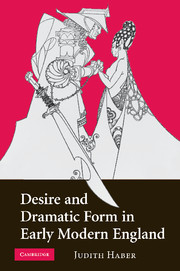Book contents
- Frontmatter
- Contents
- Acknowledgments
- Textual note
- Introduction: consummate play
- Part I “COME … AND PLAY”: CHRISTOPHER MARLOWE, BESIDE THE POINT
- 1 Genre, gender, and sexuality in “The Passionate Shepherd” and Tamburlaine
- 2 Submitting to history: Edward II
- 3 “True-loves blood”: narrative and desire in Hero and Leander
- 4 “Thus with a kiss”: a Shakespearean interlude
- Part II DESIRING WOMEN IN THE SEVENTEENTH CENTURY
- Afterword: for(e)play
- Notes
- List of Works cited
- Index
4 - “Thus with a kiss”: a Shakespearean interlude
Published online by Cambridge University Press: 02 July 2009
- Frontmatter
- Contents
- Acknowledgments
- Textual note
- Introduction: consummate play
- Part I “COME … AND PLAY”: CHRISTOPHER MARLOWE, BESIDE THE POINT
- 1 Genre, gender, and sexuality in “The Passionate Shepherd” and Tamburlaine
- 2 Submitting to history: Edward II
- 3 “True-loves blood”: narrative and desire in Hero and Leander
- 4 “Thus with a kiss”: a Shakespearean interlude
- Part II DESIRING WOMEN IN THE SEVENTEENTH CENTURY
- Afterword: for(e)play
- Notes
- List of Works cited
- Index
Summary
Marlowe's works present us with one powerful model for interrogating conventional sexuality and traditional tragic form. But different sorts of questions are raised, of necessity, in more heteroerotically focused plays, which, in the later part of the Renaissance, begin to concentrate more fully on women. Questions about chastity and virginity (already present in Marlovian texts) come to the forefront here, as male–female relations are more carefully explored and the problem of female desire moves towards center stage. Many of the plays of this period seem haunted, in one way or another, by the image of the perfect union in orgasm/death in Romeo and Juliet. It seems useful, therefore, briefly to rehearse this image and its vicissitudes in later Shakespearean texts before turning to plays by other writers.
At the end of Romeo and Juliet, when Romeo's “Thus with a kiss I die” is met by Juliet's “Then I'll be brief. O happy dagger, / This is thy sheath; there rust, and let me die” (5.3.129, 169–70), Shakespeare makes explicit the links between sexual and textual consummation that are repeatedly suggested by Marlowe, and he effectively thematizes the self-defining, self-defeating movement of conventional heroic tragedy. Textual closure is further associated here, as it is in Edward II, with silence – and with silencing.
- Type
- Chapter
- Information
- Desire and Dramatic Form in Early Modern England , pp. 50 - 58Publisher: Cambridge University PressPrint publication year: 2009

